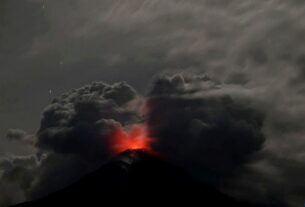Tue 22 September 2020:
Archeologists in China have discovered two perfectly preserved fossils of a new 125 million-year-old dinosaur species.
Paleontologist Pascal Godefroit, who co-authored a study of the recent discovery, said they discovered two intact fossils the Changmiania liaoningensis species of dinosaur.
“These animals were quickly covered by fine sediment while they were still alive or just after their death,” said Godefroit in a statement published by the Royal Belgian Institute of Natural Sciences.
The discovered fossils of the newly discovered species of dinosaur were discovered in the western Liaoning Province in China.

Paleontologists named the new Changmiania liaoningensis, which means “eternal sleeper from Liaoning” in Chinese.
Scientists believe that they were trapped by a volcanic eruption while resting at the bottom of their burrows.
“These animals were quickly covered by fine sediment while they were still alive or just after their death,” palaeontologist Pascal Godefroit of the Royal Belgian Institute of Natural Sciences, said.
The scientist said that the effect would be very similar to what happened in Pompeii. The new species was named Changmiania liaoningensis, according to the news release. Changmian means “eternal sleep” in Chinese.
Scientists deduce that the ornithopod lived during the Cretaceous period and that it was a small herbivore that could run very fast, based on the length of its tail and its leg composition. It was about 1.2 meters (about 4 feet) long.
“However, certain characteristics of the skeleton suggest that Changmiania could dig burrows, much like rabbits do today,” said Godefroit.
“Its neck and forearms are very short but robust, its shoulder blades are characteristic of burrowing vertebrates and the top of its snout is shaped like a shovel. So we believe that both Changmiania specimens were trapped by the volcanic eruption when they were resting at the bottom of their burrows 125 million years ago,” he added.
The complete study of their findings was published in PeerJ scientific journal.
Think your friends would be interested? Share this story!






